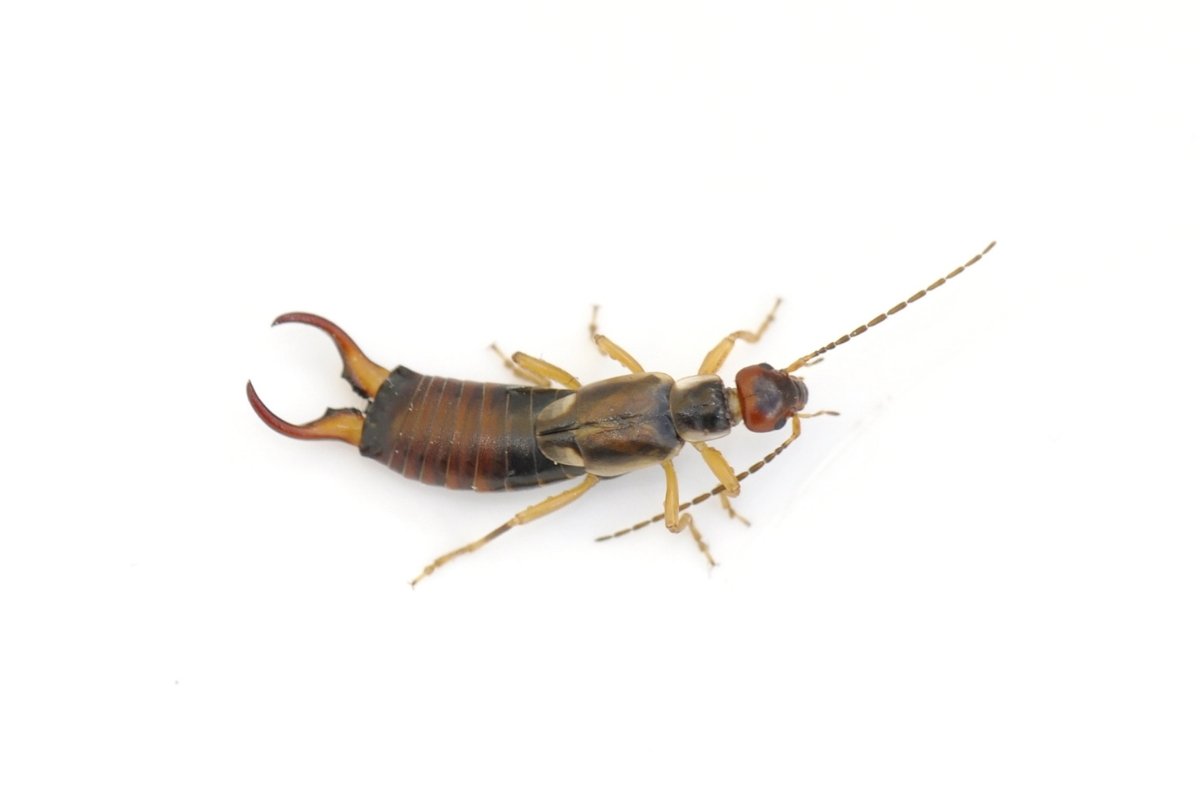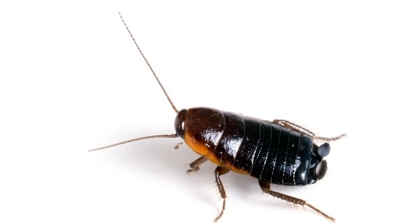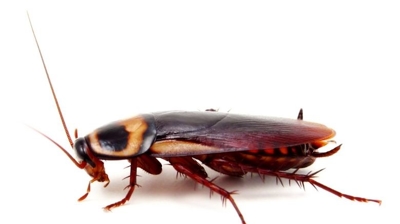
Earwig Control Services

Earwigs
Earwigs are not typically dangerous to humans. They are insects known for their distinctive pincers, or cerci, at the end of their abdomen. These pincers can look intimidating, but they are primarily used for defense, mating, and capturing prey, not for harming humans.
Earwigs are mostly nocturnal and feed on a variety of organic materials, including plants, other insects, and decaying matter. They can occasionally venture into homes, but their presence is generally more of a nuisance than a serious threat.
Although earwigs are not venomous and don't transmit diseases to humans, they can pinch if they feel threatened. This pinch can be mildly uncomfortable, but it is not dangerous and rarely causes any significant harm. Earwigs prefer dark, damp environments and are more likely to be found in areas like gardens, mulch, and leaf litter rather than indoors. If you encounter earwigs in your home, you can easily remove them using standard pest control methods or by sealing entry points to prevent their ingress.
The European earwig is by far the most commonly encountered in homes and gardens in North America, largely because of its adaptability to human-altered environments. Most other species stay outdoors and are only occasional intruders.
Learn more: Are Earwigs Dangerous? || Do Earwigs Bite? || What Do Earwigs Eat?
Earwig Removal
Earwigs may seem harmless because they rarely bite humans, but they can become a significant nuisance and even cause damage if they are not controlled. Addressing them promptly is important for several reasons:
- Plant and Garden Damage: Earwigs are omnivorous, feeding on decaying plant material, fungi, and living plants. In gardens and landscapes, they can chew on leaves, flowers, seedlings, and soft fruits. Damage often appears as irregular holes, ragged edges, or even entire plants being compromised in severe infestations. For ornamental or vegetable gardens, this can quickly lead to economic loss and aesthetic damage.
- Infestation Potential: Earwigs reproduce rapidly under favorable conditions. A small number can quickly escalate into a large population, making control more difficult over time. They are nocturnal and tend to hide in damp, dark areas during the day, which can make early detection and treatment tricky.
- Structural Concerns: While earwigs do not eat wood like termites, they can enter homes in large numbers seeking moisture, warmth, and shelter. Their presence in attics, basements, or around window and door frames can indicate conditions that might attract other pests as well.
- Nuisance Factor: Even though they do not pose a direct health threat, earwigs can be alarming to homeowners. Their tendency to crawl on walls, floors, and in bathrooms at night can create significant discomfort and stress.
- Indirect Risks: Earwigs can contribute to secondary problems. By feeding on decaying plant matter, they sometimes spread fungal spores or attract other pests. In commercial or food production settings, their presence may be seen as a contamination risk.
While earwigs may not be dangerous individually, their feeding habits, rapid reproduction, and potential to invade homes make timely control essential for both aesthetic and practical reasons.
Learn more: How To Get Rid Of Earwigs
Earwig Control
Earwigs may look intimidating with their pincers, but what makes them a nuisance isn’t just their appearance—it’s the problems they create when they invade homes and businesses. While DIY methods may temporarily reduce earwig sightings, they rarely solve the root of the infestation. Here’s why hiring our professional earwig control is the best approach:
- Accurate Identification and Inspection: Our professionals don’t just get rid of what you see—they find out why earwigs are thriving on your property. Earwigs are moisture-loving pests that hide in cracks, mulch, basements, bathrooms, and kitchens. Our trained technicians can identify where they’re nesting and what conditions are attracting them.
- Targeted Treatments That Work: Store-bought sprays and traps may only kill the earwigs you catch, but our professionals use advanced products and application methods that eliminate earwigs at the source. Our treatments are applied strategically in hiding spots and entry points to stop earwigs from re-invading.
- Prevention of Recurring Infestations: Earwigs are often a sign of excess moisture, decaying organic matter, or gaps in a home’s foundation. Our professionals not only treat the current problem but also give expert recommendations to fix underlying issues—helping you prevent future infestations.
- Safe for Families, Pets, and Property: Our professional-grade products are far more effective than over-the-counter sprays, yet they’re applied with safety in mind. Our technicians know how to treat problem areas without putting your family, pets, or landscaping at risk.
- Protection of Food and Living Spaces: Earwigs can contaminate kitchens and pantries, chew on houseplants, and even damage produce in gardens. Our professional control services help safeguard your food sources and keeps your living areas pest-free.
- Peace of Mind and Long-Term Results: Instead of constantly battling earwigs with temporary fixes, our professional services deliver lasting results. Our regular maintenance programs ensure your home or business stays protected year-round.
Our professional earwig control doesn’t just kill earwigs—it eliminates the cause, prevents reinfestation, and protects your property long-term.
Earwig Exterminators
Hiring our local exterminators for earwig control offers several distinct advantages over relying on a large national company, particularly because earwig infestations often require tailored solutions rather than a one-size-fits-all approach:
- Deep Knowledge of Local Conditions: Our local exterminators are intimately familiar with the climate, soil types, vegetation, and seasonal pest behaviors in your area. Earwigs thrive in moist environments and tend to follow predictable patterns based on local weather and landscaping. National companies will often apply generic treatments that don’t account for these nuances, reducing effectiveness.
- Targeted Treatment Plans: Earwig infestations often require more than surface-level spraying. Our local professionals can identify specific hiding spots—like mulch, garden beds, under siding, or around foundation cracks—and apply treatments strategically. We also understand which combination of traps, baits, and residual insecticides will work best in your environment.
- Faster Response and Ongoing Support: Our local exterminators can typically respond more quickly to service calls. We also follow up after the initial treatment to ensure the infestation is fully eradicated, which is especially important for earwigs since they can reinvade from surrounding areas if conditions remain favorable. National companies often operate on rigid schedules and may not provide timely follow-up, if it is provided at all.
- Personalized Advice for Prevention: Earwig control is not only about elimination but also about preventing recurrence. Our local exterminators provide advice specific to your property, such as adjusting irrigation, removing leaf litter, sealing foundation gaps, or modifying landscaping practices. These nuanced recommendations are often overlooked by large national services that follow standardized protocols.
- Accountability and Reputation: Our local exterminators rely on our community reputation. We have a vested interest in delivering results and maintaining relationships with neighbors. Large national companies, in contrast, operate on volume, and service quality can vary widely between technicians.
Earwig infestations benefit from precise, location-specific strategies. Our local exterminators bring the expertise, responsiveness, and personalized care that maximize effectiveness and reduce the likelihood of recurrence—something national companies rarely match.
What Do Earwigs Look Like?
Earwigs are small insects with distinctive features that make them relatively easy to identify. Here's a detailed description of their appearance:
- Body Shape: Earwigs have an elongated, slender body that can range in size from a few millimeters to about 50 millimeters. Most species are around 5 to 25 millimeters in length.
- Color: They are typically dark brown to black in color, although some species may be reddish-brown or lighter shades.
- Antennae: Earwigs have long, thread-like antennae that arise from their heads.
- Wings: They have two pairs of wings. The first pair is leathery and serves as protective covers for the second pair, which are thin, membranous wings. The hindwings are folded underneath the forewings when at rest.
- Pincers (Cerci): One of the most distinctive features of earwigs is the pair of pincer-like appendages at the rear of their abdomen, known as cerci. These cerci resemble forceps or pinchers and are used for various purposes, including defense, capturing prey, and mating. While they may look intimidating, they are not generally harmful to humans.
- Legs: Earwigs have six legs, which are relatively long and well-suited for crawling.
- Eyes: They typically have small, dark compound eyes on their heads.
- Segmentation: Their body is segmented into a head, thorax, and abdomen, with the pincer-like cerci located at the end of the abdomen.
Earwigs have an elongated, dark-colored body with two pairs of wings, long antennae, and distinctive pincer-like cerci at the end of their abdomen. These features, particularly the cerci, set them apart from many other insects. Despite their somewhat menacing appearance, earwigs are generally harmless to humans and serve various ecological roles in their natural habitats.
Where Are Earwigs Found?
Earwigs can be found in a variety of habitats, typically preferring dark and damp environments. Here are some common places where you might encounter earwigs:
- Gardens and Landscapes: Earwigs are often found in gardens and outdoor landscapes. They hide under plant debris, mulch, rocks, and in the soil. They can occasionally damage young plants by feeding on leaves and stems.
- Under Logs and Rocks: Earwigs seek shelter under logs, rocks, and other natural debris during the day. These cool, dark, and humid spaces provide them with protection and a place to lay their eggs.
- Flowerbeds: They are known to hide in flowerbeds, particularly in areas with mulch or decaying plant matter.
- Compost Piles: Compost piles provide an excellent environment for earwigs due to the abundance of decaying organic matter. They help break down this material as part of their role in the ecosystem.
- Damp Basements and Crawl Spaces: Earwigs may find their way into homes, especially during rainy or humid weather. They are attracted to the moisture and can be found in damp basements, crawl spaces, or other dark, moist areas.
- Beneath Stones and Patio Slabs: Earwigs are often discovered when lifting stones, bricks, or patio slabs, as they seek refuge in these cool, concealed spaces.
- Wood Piles: Stacks of firewood or lumber can also harbor earwigs, as they prefer cool and shaded areas.
- Outdoor Trash Bins: Earwigs can be attracted to outdoor garbage and compost bins, especially if they contain decaying organic material.
- Tree Bark: Some species of earwigs are known to hide under tree bark, particularly in more wooded environments.
- Leaf Litter: In natural settings, they may be found under fallen leaves and leaf litter in forests or wooded areas.
Earwigs are primarily nocturnal, so they are most active during the night. If you encounter them in your garden or home and find them to be a nuisance, there are various methods for managing and controlling their populations, such as maintaining good sanitation, removing hiding spots, and using traps or insecticides if necessary.
Learn more: Do Earwigs Fly?
Earwig Life Cycle
The life cycle of earwigs consists of several stages, including egg, nymph, and adult. Here's an overview of the life cycle of these insects:
- Egg Stage: The life cycle typically begins when adult female earwigs lay eggs. The eggs are usually deposited in protected, dark locations, such as crevices, under plant debris, or in the soil. Depending on the species and environmental conditions, the eggs can take one to three weeks to hatch. The female typically guards and cares for the eggs during this time.
- Nymph Stage: After hatching, young earwigs are referred to as nymphs. Nymphs closely resemble adult earwigs but are smaller and lack fully developed wings and pincers. Nymphs undergo several molts, shedding their exoskeleton as they grow. During each molt, they develop increasingly mature features, such as wings and the characteristic pincer-like cerci. The duration of the nymph stage varies but typically lasts several weeks to a few months, depending on species and environmental factors.
- Adult Stage: Once the nymphs have completed their molts and reached full maturity, they become adult earwigs. Adult earwigs are typically more mobile, have fully developed wings, and are capable of mating and reproducing. Depending on the species, adult earwigs can live for several months to a few years. They are nocturnal and are most active during the night.
- Reproduction: Earwigs reproduce through mating, where the male transfers sperm to the female's reproductive system. This typically occurs during the night. After mating, the female lays eggs, starting the life cycle anew.
The specific timing of each stage in the life cycle can vary depending on factors such as temperature, humidity, and food availability. In favorable conditions, earwigs can complete their life cycle relatively quickly. They are known for their maternal care, with the mother often protecting and caring for her eggs and nymphs until they are more independent.
Understanding the life cycle of earwigs is crucial for pest management and control, especially if their presence becomes problematic in gardens or homes.

Hear From Our Happy Customers
-
"Great Communication"
Tech was on time, communication was great, and he accommodated my needs.
- Alonzo W. -
"Exceeds Expectations"
I can’t say enough positive things about this company... The tech that came out, Jarvis went above and beyond my expectations. Thank you guys, I will continue using your services.
- Jake M. -
"Fantastic & Patient"
Jarvis was fantastic and patient. He answered my questions with an in-depth explanation and addressed all of my areas of concern. Would love for him to be my assigned tech going forward. Well done!
- Yonnette M. -
"Professional & Considerate"
I’m pleased with Miche services. Jarvis came today. Professional and considerate. Thank you!
- Judy B. -
"Wonderful Service"
Wonderful service. Jarvis is great. Took care of everything I needed. Thank you!
- Henry P. -
"Very Knowledgeable"
The tech that arrived was courteous, professional, and very knowledgeable. He was Great.
- Uerial I.



